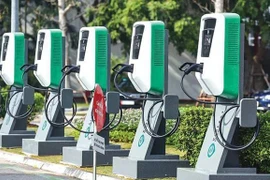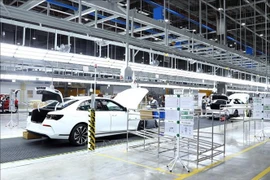Hanoi (VNS/VNA) - According to the International Energy Agency (IEA), Vietnam needs between 100,000 and 350,000 electric vehicle (EV) charging stations over the next 15 years – roughly one for every ten EVs – to keep pace with demand.
As climate change and environmental concerns grow ever more urgent, the Government is introducing policies to promote clean transport, particularly electric vehicles. However, charging infrastructure – crucial to the success of EV adoption – is lagging.
According to the Vietnam Automobile Manufacturers’ Association (VAMA), EV sales reached nearly 90,000 units in 2024, a 2.5-fold increase from 2023 and more than 11 times the figure in 2022. By 2030, the number of EVs in Vietnam is expected to reach one million, rising to 3.5 million by 2040.
Experts warned infrastructure development is struggling to keep up. Outside of domestic automaker VinFast, which is building a nationwide charging network, other EV brands face difficulties due to the lack of available charging stations.
Nguyen Manh Thang, director of Whatcar Vietnam and admin of the OTO+ community, described the issue as a 'chicken-and-egg' situation.
“Investment in charging stations depends on demand. If people don’t see stations, they won’t buy EVs. And if demand isn’t visible, companies won’t invest in the infrastructure,” he said. “But once EV adoption grows, investment in charging becomes inevitable.”
Thang also pointed out that changing consumer mindset is key. “People are used to the convenience of petrol stations. With EVs, long-distance travel requires planning – knowing where and when to charge. That’s a mental shift.”
Nguyen Minh Binh, a resident of Dong Da district in Hanoi, said the limited number of stations – mostly concentrated in major cities like Hanoi and Ho Chi Minh City – makes EVs inconvenient for long-distance travel.
“There are few stations along highways, rest stops or in smaller provinces,” he said. “This discourages consumers from switching to EVs or trusting lesser-known brands.”
Experts also highlight the lack of technical standards and regulations as a barrier. Vietnam has no consistent guidelines on where and how to build charging stations or safety standards for electrical systems and fire prevention. This leads to a fragmented system where companies follow their protocols, including separate electricity pricing models.
On the regulatory side, Nguyen Huu Tien, deputy director of the Department of Science, Technology, Environment and Building Materials under the Ministry of Construction, said that the Ministry of Science and Technology is drafting national technical regulations on EV charging stations.
“We’re working with relevant agencies to develop charging standards for stops, bus stations and urban areas to improve convenience,” he said.
Thang also suggested financial incentives, such as low-interest loans, to help businesses absorb the risks of investing in charging stations./.

See more
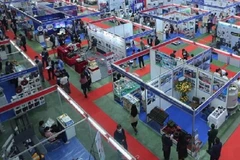
HCM City to host int'l electronics, smart appliances expo
Spanning over 10,000 s.q.m, the exhibition will gather more than 350 enterprises from Vietnam and China. It will showcase a wide range of products across the consumer electronics and smart home appliance sectors, offering direct access to manufacturers and promoting trade links.

Southeast Vietnam reinforces position as prime investment destination
Localities in the southeastern region are augmenting efforts to better the investment climate, further enhancing their attractiveness to both domestic and foreign investors.
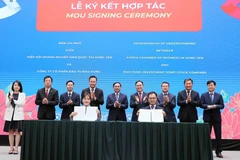
Vietnam looks for stronger cooperation with RoK in new era: Official
The RoK currently ranks first in FDI in Vietnam, with 10,128 projects and a total registered capital of over 92 billion USD; second in official development assistance (ODA), labour, and tourism; and third in trade cooperation

China Homelife exhibition opens in HCM City
A highlight of the event is the VIP Buyer Programme, tailored exclusively for strategic buyers and senior executives, which offers priority access to exhibitors, personalised matchmaking services, private meeting spaces, and premium networking areas.

RoK firm boosts sustainable chili supply chain in Ninh Thuan
Ninh Thuan chili powder brand has officially returned to the shelves of Bach Hoa Xanh and Co.op Mart supermarket chains, marking a key milestone in the restoration of the local value chain from production to consumption.
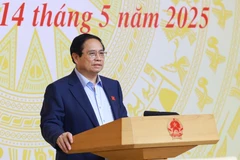
Prime Minister orders nationwide crackdown on smuggling, trade fraud
The Ministry of Public Security will coordinate with other ministries and localities to launch the crackdown, which will run nationwide from May 15 to June 15.
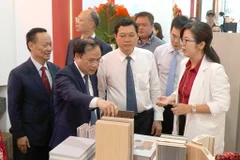
Nearly 900 enterprises join Vietbuild Da Nang 2025
Running from May 14 to 18, Vietbuild Da Nang 2025 serves as a platform to showcase new products, cutting-edge technologies, and international brands in the construction, building materials, real estate, and décor industries.

Thailand showcases top brands at HCM City trade fair
The event is expects to welcome some 60,000 visitors during the course of four days. It features sectors such as food and beverages, beauty and wellness, home appliances, fashion, car and motorbike parts, and tourism.

VinSpeed proposes 61.35 billion USD investment for North–South high-speed railway
VinSpeed commits to mobilising 20% of the total capital, equivalent to 12.27 billion USD. For the remaining 80%, excluding costs related to compensation, relocation support, and resettlement for land clearance, the company proposed borrowing from the state budget, through zero-interest loans, repayable over a 35-year period from the disbursement date.

Vietnam Airlines to relocate all domestic flights to Tan Son Nhat's Terminal T3
Starting from 4 am on May 17, all remaining Vietnam Airlines domestic routes will be handled at Terminal T3. The decision follows a 20-day trial during which the national carrier operated domestic routes between HCM City and Hanoi, as well as between HCM City and Van Don, at the newly inaugurated terminal.
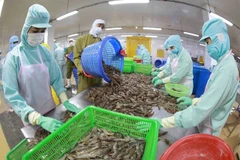
Seafood industry diversifies market to achieve export target
Vietnam’s seafood sector is setting ambitious goals for 2025 with a 4.35% growth rate and an export turnover of 11 billion USD.

Banks face difficulties in requiring SOE shareholders to divest
According to the current regulations, the share ownership cap by an institutional shareholder in a credit institution is reduced from 15% to 10% and for an individual and his/her related parties from 20% to 15%.
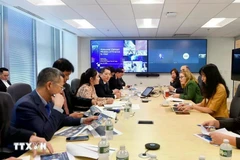
Vietnam, US promote cooperation in AI, semiconductor
AI and semiconductors have been identified as core sectors for development by both Vietnam and the US in the coming decade, thus contributing to balancing trade and investment between the two countries.
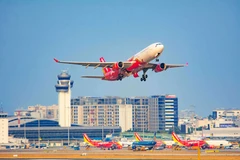
Vietjet kicks off summer sales, offering millions of tickets from 0 VND
Promotional tickets are available from now until 23:00 on May 18, 2025 at website www.vietjetair.com and Vietjet Air mobile app with flight time from June 1, 2025 to March 28, 2026 (terms and conditions apply).
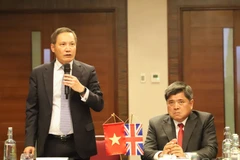
Vietnam, UK boost agricultural trade ties
The UK, with an annual agri-food import value of 67 billion USD, is seen as a high-potential market. In 2024, Vietnam’s agri-export turnover to the UK reached nearly 883 million USD, a 15.4% year-on-year increase.

PM directs strict review on causes of worsening situation of trade fraud, counterfeit goods
Counterfeit products are being sold widely on social media, with reports of price manipulation, hoarding, and illegal mark-ups, PM Chinh noted, emphasising that these activities negatively impact public health, people's trust, security and order, and lead to significant revenue losses, further disrupting many aspects of social life.
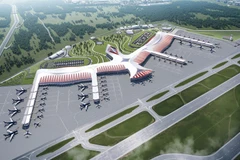
Phu Quoc int’l airport to undergo major upgrade ahead of APEC 2027
Phu Quoc Airport will be expanded to accommodate up to 18 million passengers per year by 2027, 4.5 times its current capacity of 4 million. By 2050, the airport is expected to handle up to 50 million passengers annually.

Ministries, agencies asked to take measures to effectively manage gold market
However, along with pending internal shortcomings, the unusual and unprecedented developments in the world geopolitical situation since the beginning of 2025 have pushed international gold prices to continuously increase, resulting in strong fluctuations in domestic gold prices, and the growing gap between domestic and world gold prices.

Vietnam’s mollusc exports to China soar in Q1 2025
China emerged as the leading importer in the quarter, with its mollusc imports from Vietnam exceeding 23 million USD, a staggering rise of nearly 2,000%.

Vietnam re-elected Chair of World Customs Organisation’s Permanent Technical Committee
The re-election reaffirms the country's increasingly important position and role in shaping global customs policies and operations, while also recognising its active and effective contributions during the previous chairmanship term.
